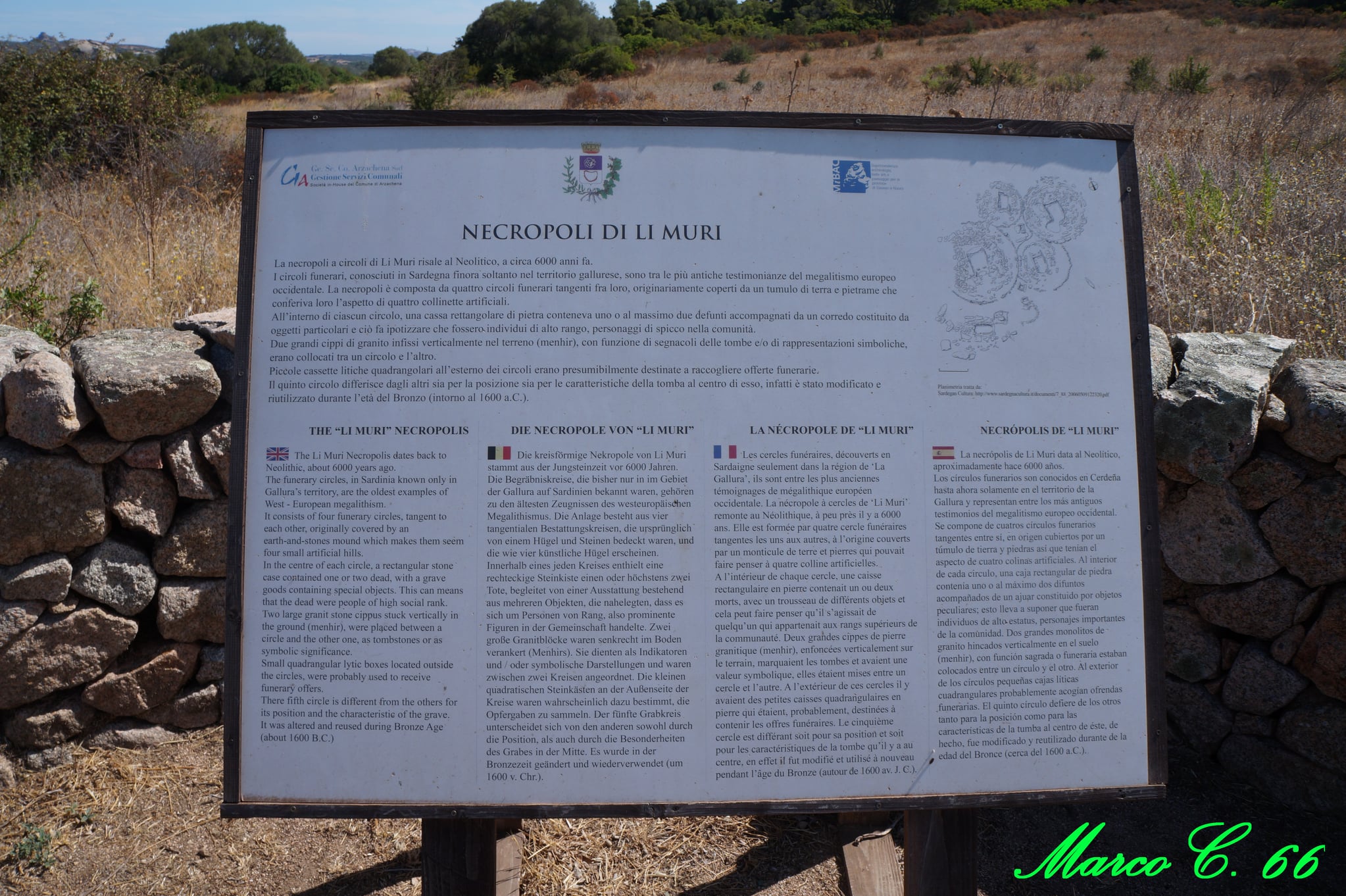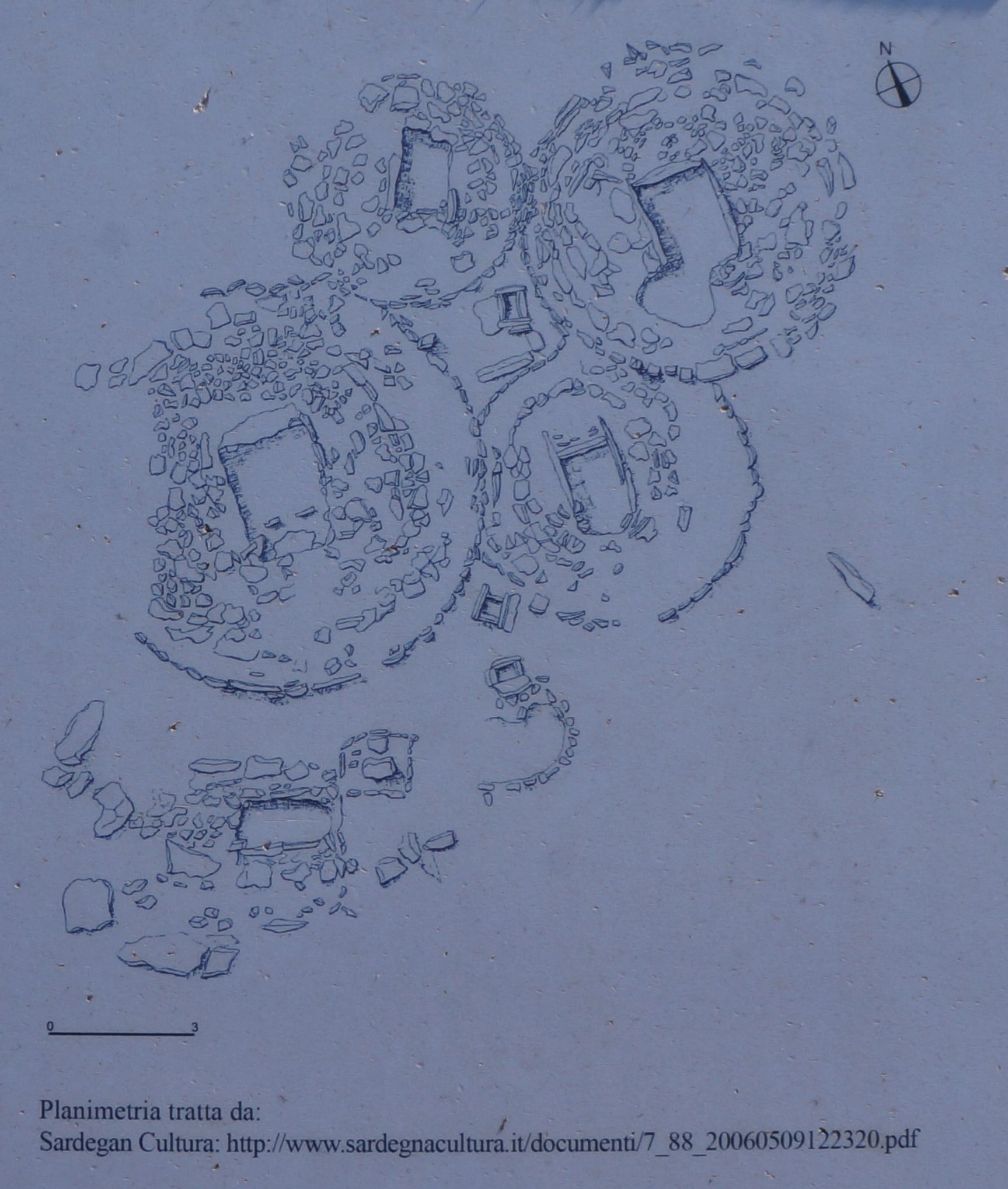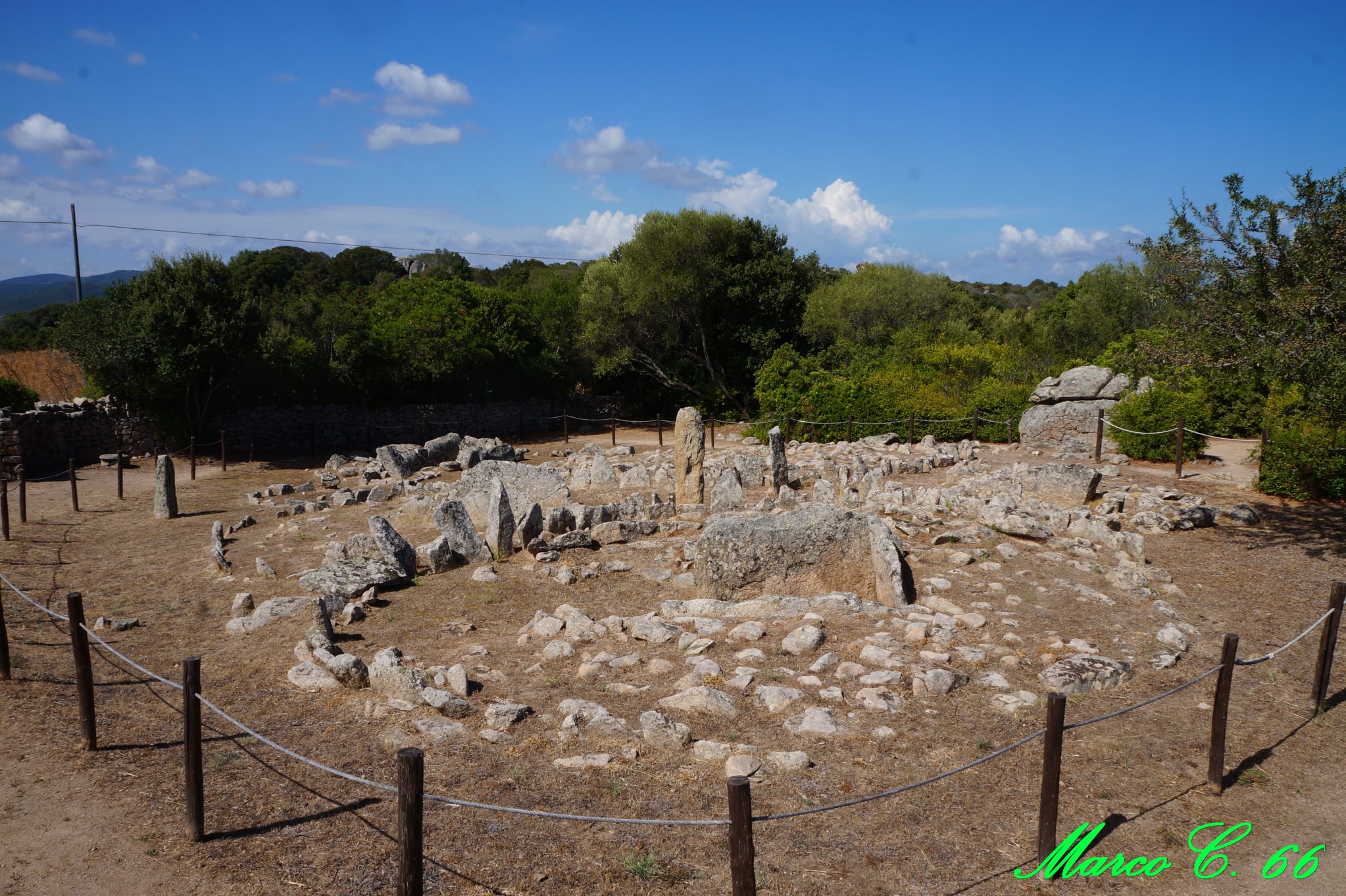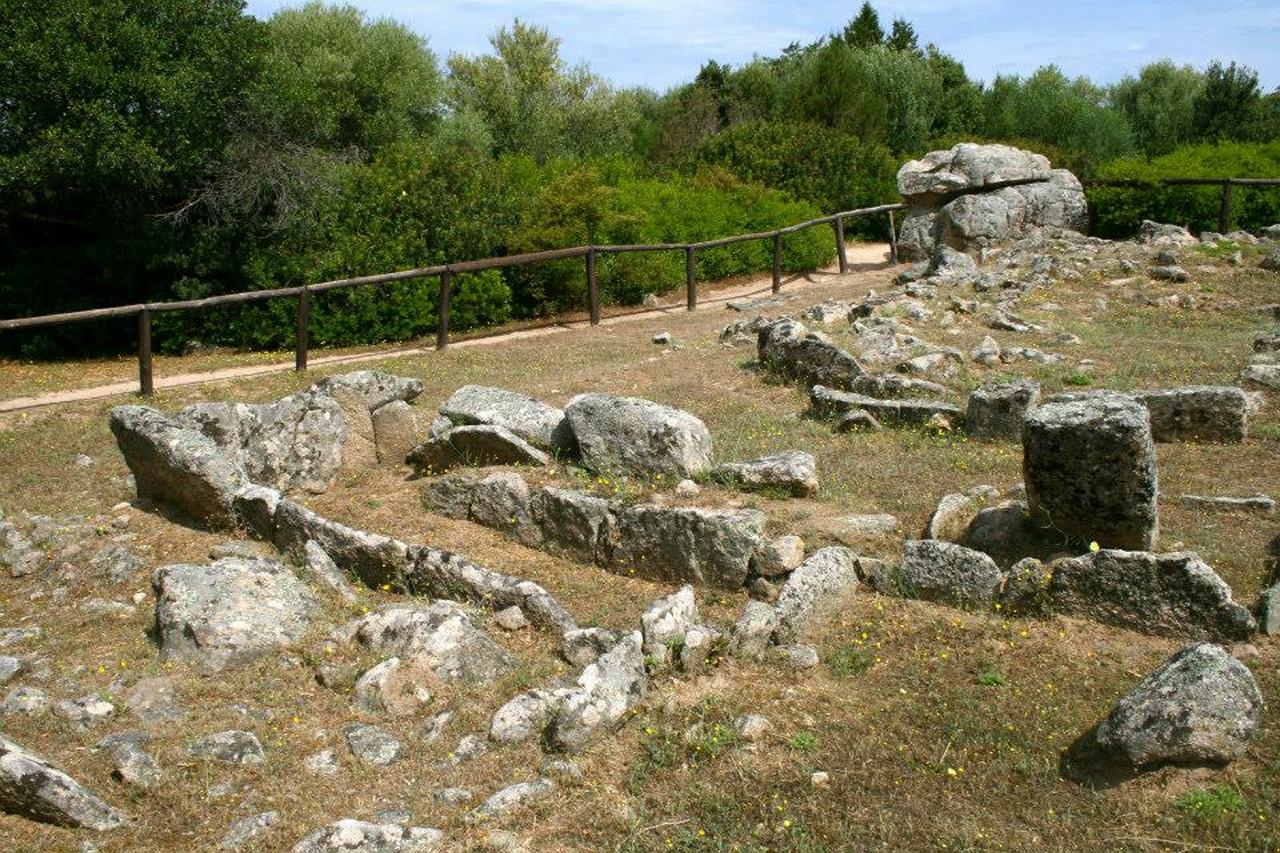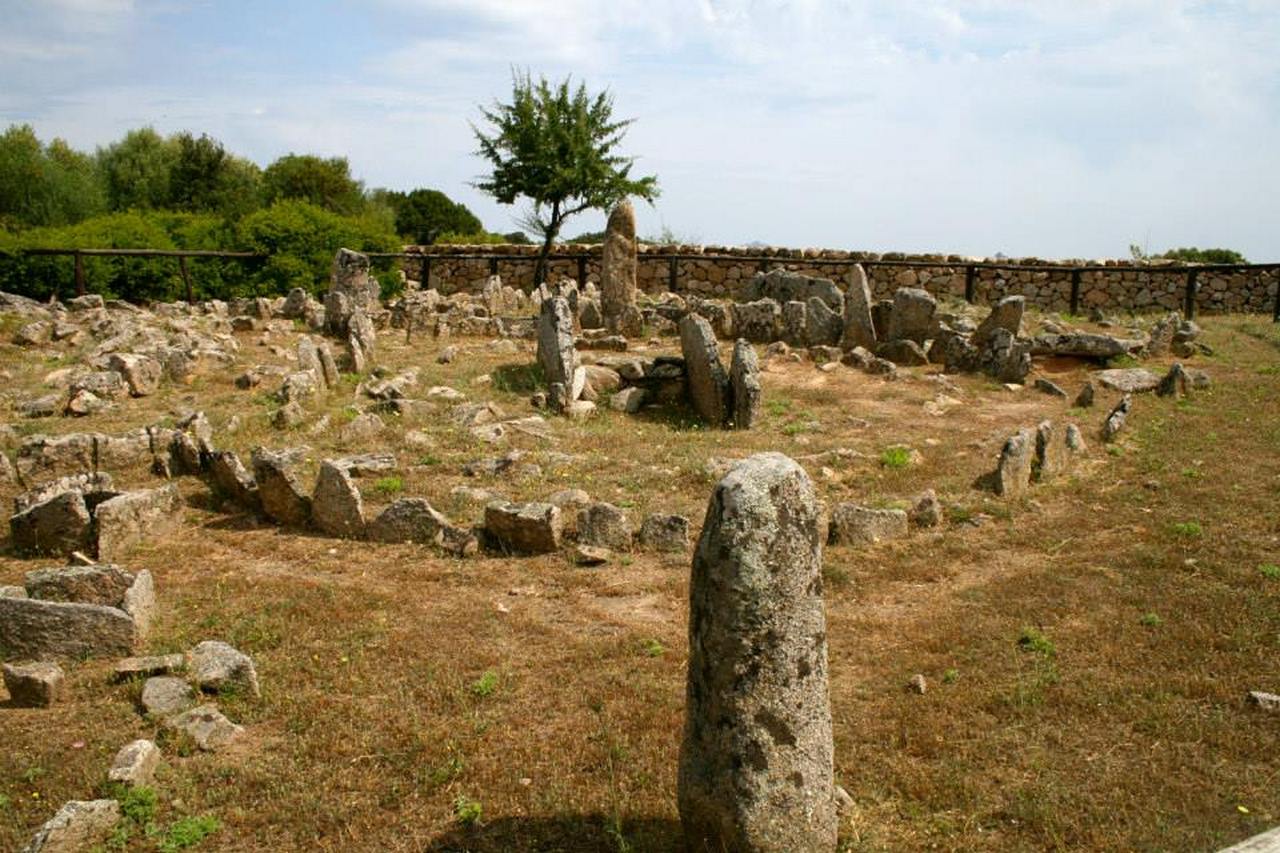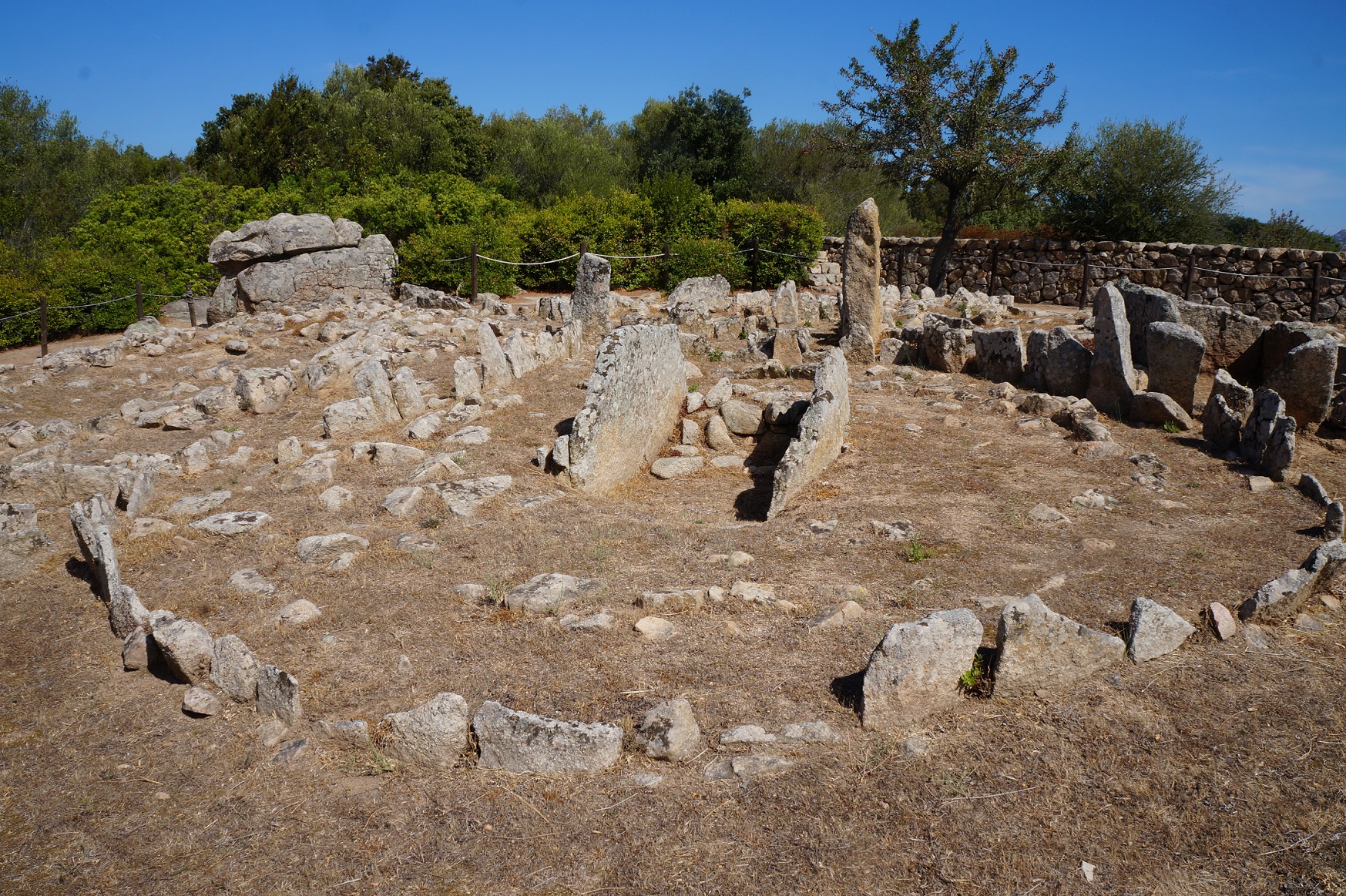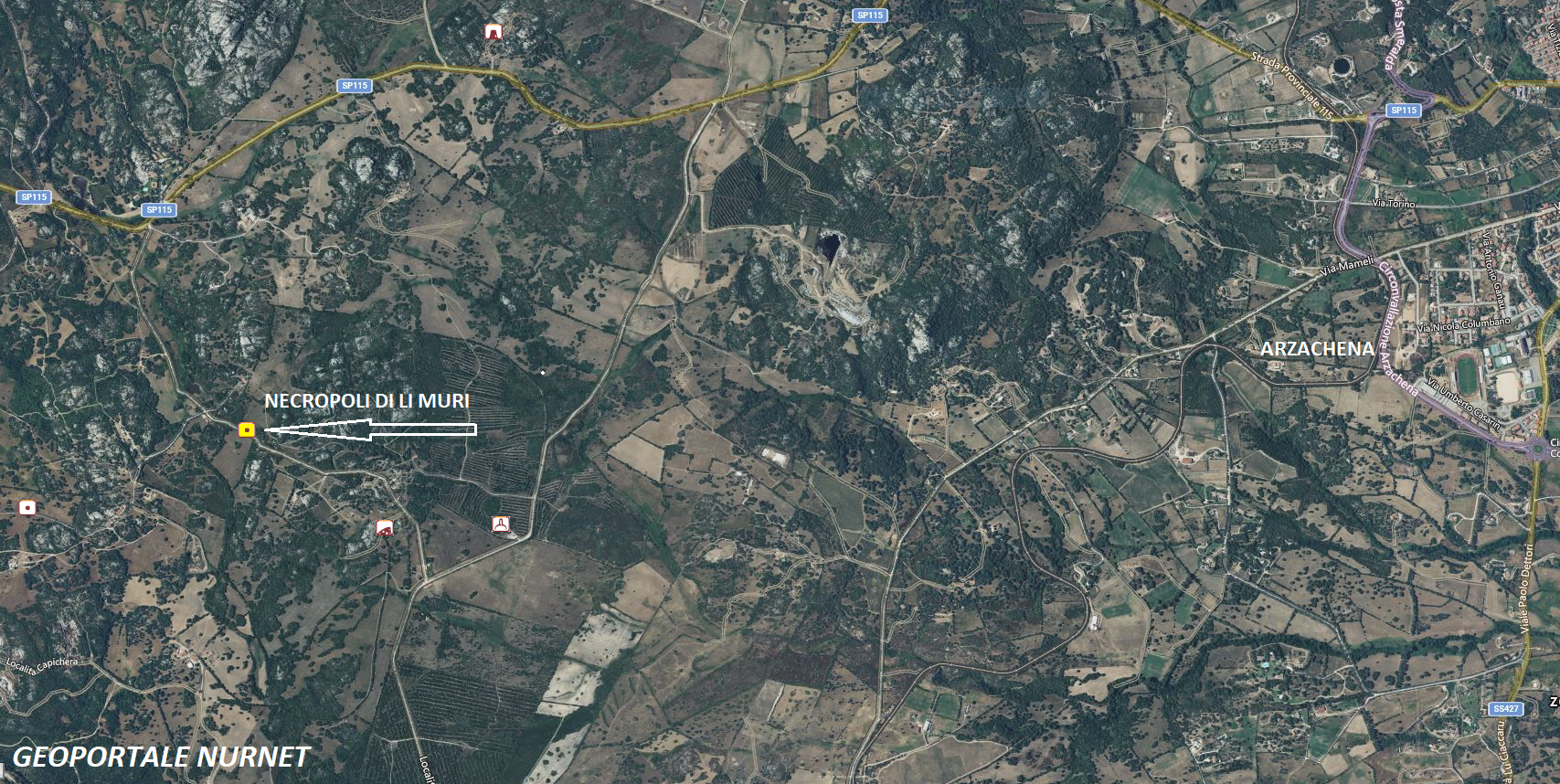The Neolithic necropolis of Li Muri is certainly the most well-known archaeological site in the vast area of Arzachena due to the uniqueness of the tombs that compose it. Discovered in 1939, it consists of a series of dolmenic cists, that is, small burial cells made of stone slabs set upright, originally covered by a lid, surrounded by small stones arranged in concentric circles. The latter had the function of containing a mound of earth and stones that was meant to cover the tomb, preventing as much as possible the washing away caused by rain. The necropolis in its entirety must therefore have appeared as a collection of circular mounds, tangent to each other, with diameters ranging from 5.30 to 8.50 meters. In the circle that delineated each tomb, there are the remains of a menhir, a stone pillar set into the ground that was attributed with sacred value. Near the points of tangency of the funerary circles, three stone boxes, approximately 50X50 cm in size, were found, probably intended to hold periodic food offerings for the deceased. Some objects that are part of the funerary goods from this necropolis, including bowls made of steatite, flint blades, and small triangular axes made of polished hard stone, as well as necklace beads shaped like small olives, exhibit particularly refined craftsmanship. The type of tombs in the necropolis of Li Muri has given its name to a culture attributable to the Neolithic age (4th millennium BC): that of the “megalithic circles,” also known as the Arzachena Culture or Gallurese Culture, due to the particular concentration of tomb circles with lithic cists in this territory. (Ministry of Culture)
The photos of the necropolis of Li Muri are by Marco Cocco and Cinzia Olias.

